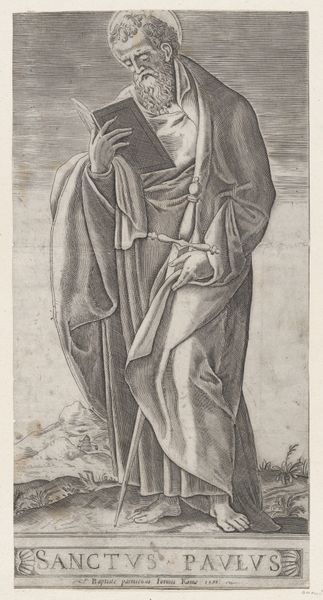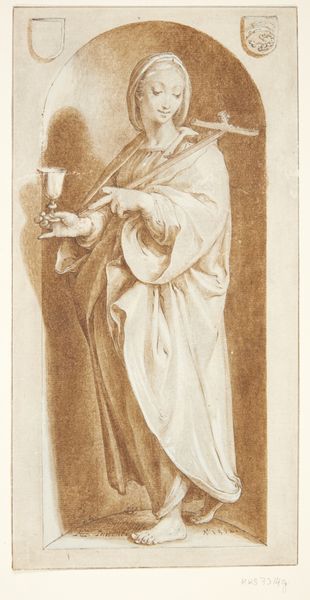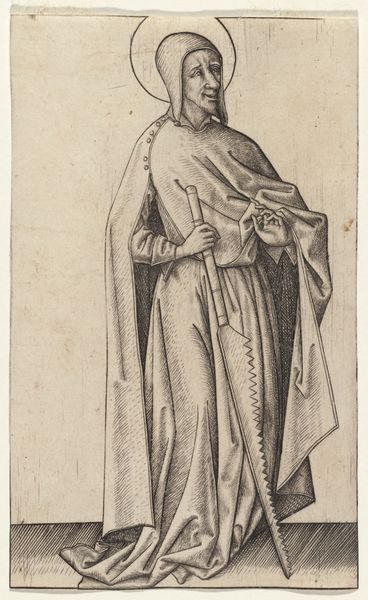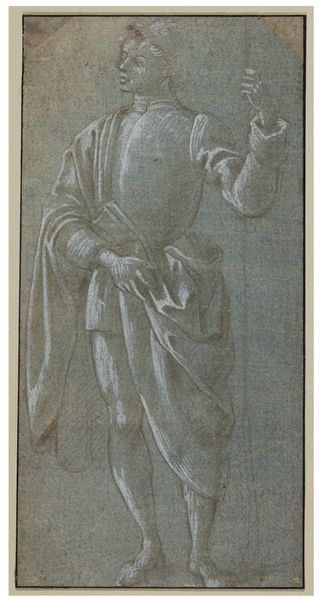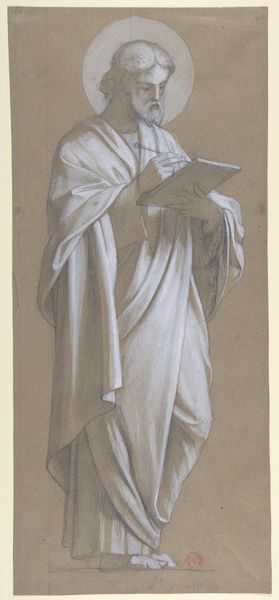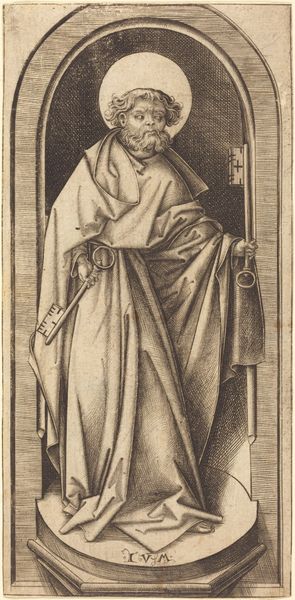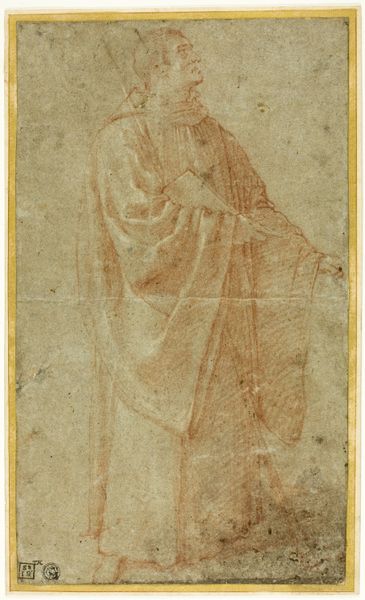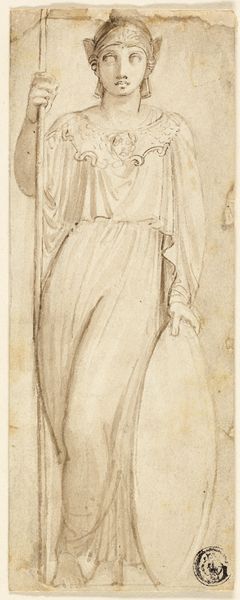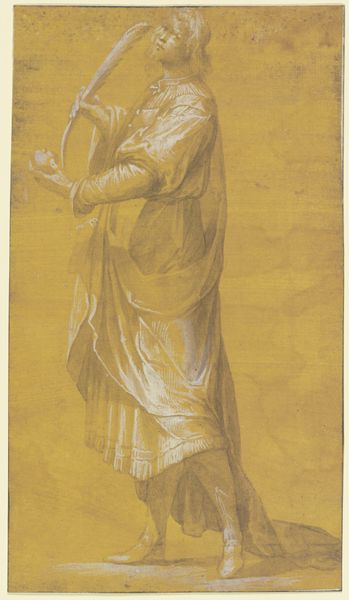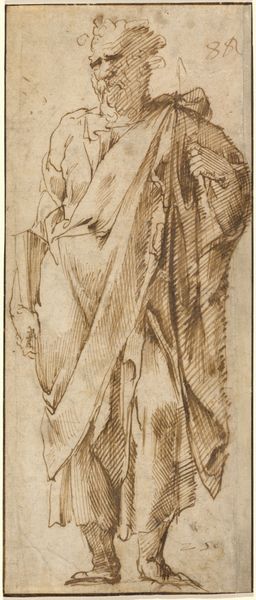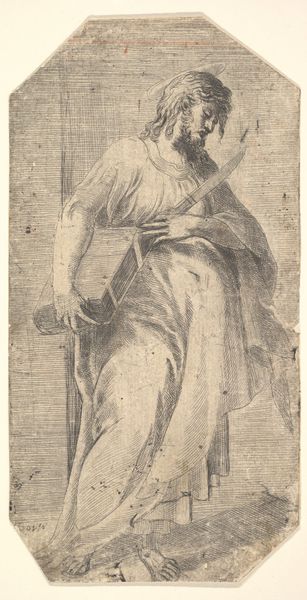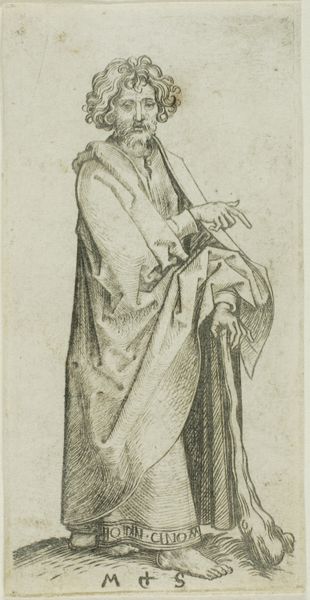
drawing, ink, chalk, charcoal
#
portrait
#
drawing
#
charcoal drawing
#
figuration
#
11_renaissance
#
ink
#
chalk
#
charcoal
Copyright: Public Domain
Curator: I’m struck by the subtle somberness here. This study by Pesellino, dating to around 1455-1457, shows a standing saint in ink, chalk and charcoal. He appears contemplative. Editor: It's more than contemplative; the downward gaze combined with the texture of the layered media hints at hardship, perhaps even mortification. Tell me more about Pesellino’s working process on this piece. Curator: The dynamism here is noteworthy: layering ink washes to create shadows, softened by chalk highlights to evoke fabric, the medium is paramount. There's evidence of careful study; he wasn’t afraid of blending methods to reach an end. Look closely. The material informs how we relate to this figure, bridging divine presence and material existence. Editor: Absolutely. That material presence lends itself to iconographic interpretation. The book, for example, indicates wisdom and learning. The halo, though subtly rendered, speaks of sainthood. Even the garment implies piety. He carries his divine understanding. Curator: And the rough feet at the bottom. In a time of highly religious symbolism, bare feet suggest the subject has surrendered to earthly humility in faith, in his practice of life. His connection with his materials is just like the Saints of old, his submission is absolute! Editor: The deliberate choice of charcoal, ink, and chalk also points towards access to materials and artisanal tradition within workshops of the Renaissance, where artistry met religious production. There’s so much history embedded within this figure, a beautiful blending of the material and the allegorical. Curator: It does make you think about who crafted this religious scene. This fusion gives me so much joy in understanding how process can amplify meaning. Editor: It deepens my understanding, as well, about the power of an image to echo throughout time. We’ve seen how both the materials themselves, and what they bring, tie in deeply with art history itself.
Comments
No comments
Be the first to comment and join the conversation on the ultimate creative platform.
